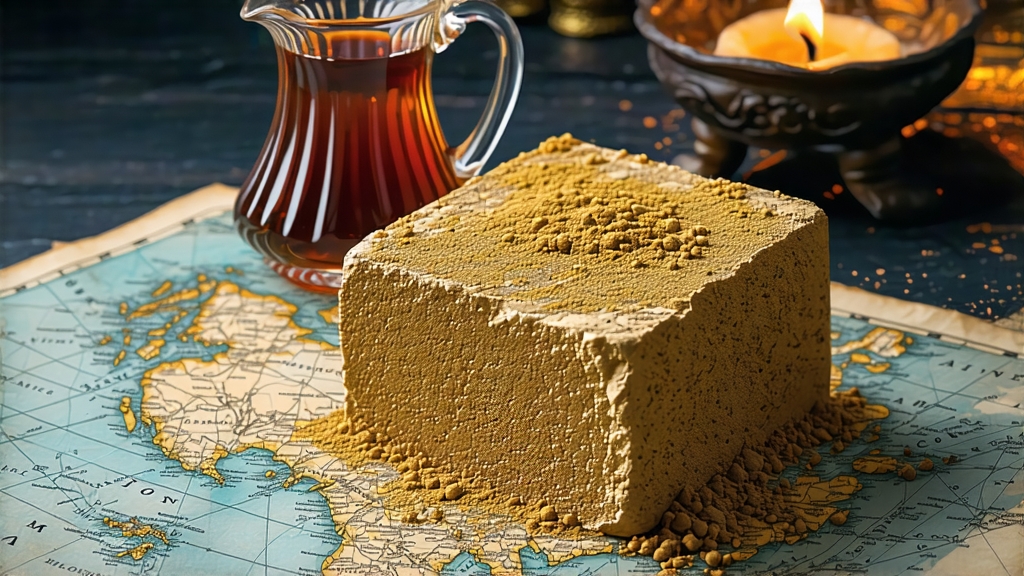
Few beverages can claim to have financed armies, pacified frontiers, and still be sipped daily by nomads eight centuries later. Fu brick tea—known in Mandarin as Fú zhuān chá—does exactly that. Compressed into a dense, chocolate-brown slab etched with Chinese characters, this post-fermented dark tea was once the hard currency of the Silk Road, traded ounce-for-ounce with Tibetan warhorses and Mongolian jade. Today it travels westward again, not on camelback but in FedEx pouches, landing on specialty shelves from Brooklyn to Berlin. What awaits the curious drinker is a liquor that smells of wet earth and dried apricot, tastes like cocoa nib and sour plum, and finishes with a cooling camphor breath that lingers longer than most red wines.
History: From Imperial Decree to Caravan Staple
The story begins in 1368, the first year of the Ming Dynasty, when the imperial court decreed that tea—more transportable and less perishable than silver—would be the medium for bartering warhorses from the Tibetan Plateau. The rugged route west demanded a tea that could survive six months of yak-saddle friction, summer downpours, and winter frost. Sun-dried green tea shattered; lightly fermented pu-erh molded. Only a fully fermented, heavily compressed brick could endure. Artisans in Jingyang County, Shaanxi, pioneered the “wet piling” technique: spraying piles of coarse leaves with groundwater, then covering them with hemp cloth to ferment for weeks. The result was a brick so dense it could be dropped from a fortress wall without cracking, yet so microbially alive that it improved with every mile it traveled. By the Qing Dynasty, annual production surpassed four million kilograms, and caravans of up to three hundred mules departed Xi’an each spring, bells clinking toward Lhasa.
Terroir and Leaf Grade: Why Only Jingyang River Water Will Do
Modern geography places Fu brick production at the confluence of the Jing and Wei Rivers, where loess soil filters groundwater to an unusually soft 60 ppm mineral content. This water carries just enough calcium to feed the Eurotium cristatum fungus—later dubbed “golden flowers” (jin hua)—yet is gentle enough to keep enzyme activity delicately balanced. Only third- and fourth-grade leaves are chosen: older, tougher material rich in cellulose that the fungus can hollow into honeycomb chambers, creating space for the slow release of amino acids. Buds are rejected; their lipids oxidize too fast, turning the brick rancid within a year.
Crafting the Brick: A Dance of Steam, Pressure, and Microbes
Step 1—Picking: After the Grain Rain festival, when spring rains fatten the leaves, workers pluck one leaf plus a half-open bud, rejecting any insect-bitten blade.
Step 2—Pan-Firing: Leaves are tossed for three minutes in woks heated to 280 °C, deactivating polyphenol oxidase but preserving pectin for later fungal adhesion.
Step 3—Rolling: While still warm, the leaves are rolled under bamboo mats until they curl into snail-like strips, rupturing 30 % of cell walls to invite microbial colonization.
Step 4—Piling: The strips are stacked 70 cm high in humid rooms kept at 28 °C and 85 % RH. Over eight hours the pile hits 45 °C, initiating thermophilic fermentation that turns the leaves ochre and imparts a faint scent of cooked pumpkin.
Step 5—Adding the “Flower Seed”: A spore-rich powder from previous golden-flower bricks is dusted over the pile like sourdough starter. Within 48 hours, yellow flecks appear—pin-head colonies that will bloom into full flowers.
Step 6—Compression: The fermented tea is steamed for 90 seconds, just long enough to raise moisture to 18 %, then tipped into iron molds stamped with the classic Fu pattern: four characters reading “Official Fu Brick” and a decorative border of plum blossoms. A 50-ton hydraulic press squeezes the tea for six minutes, achieving a density of 1.1 g/cm³—dense enough to sink in water.
Step 7—Fermentation Chamber: Bricks are stacked on pine shelves inside underground chambers modeled after 14th-century military granaries. For 15 days the temperature climbs from 28 °C to 46